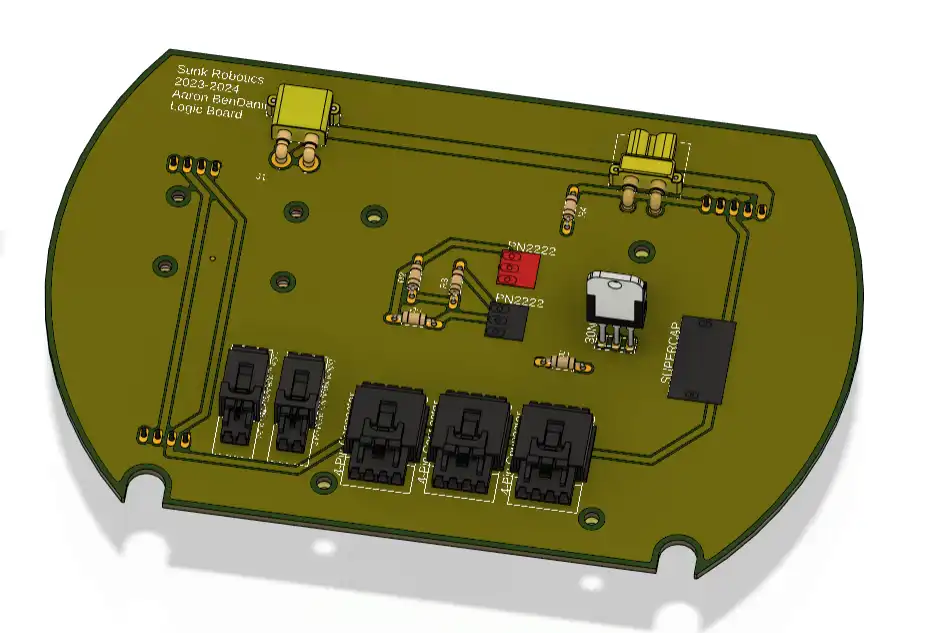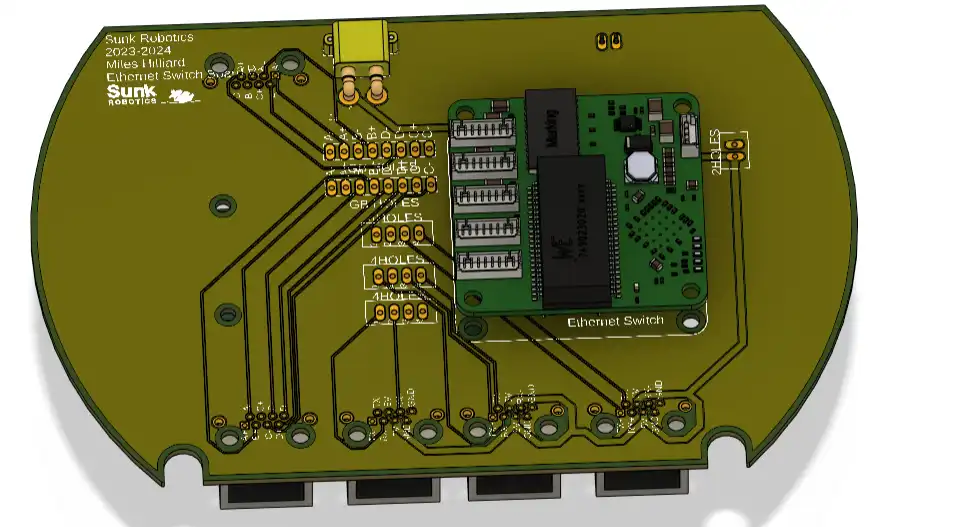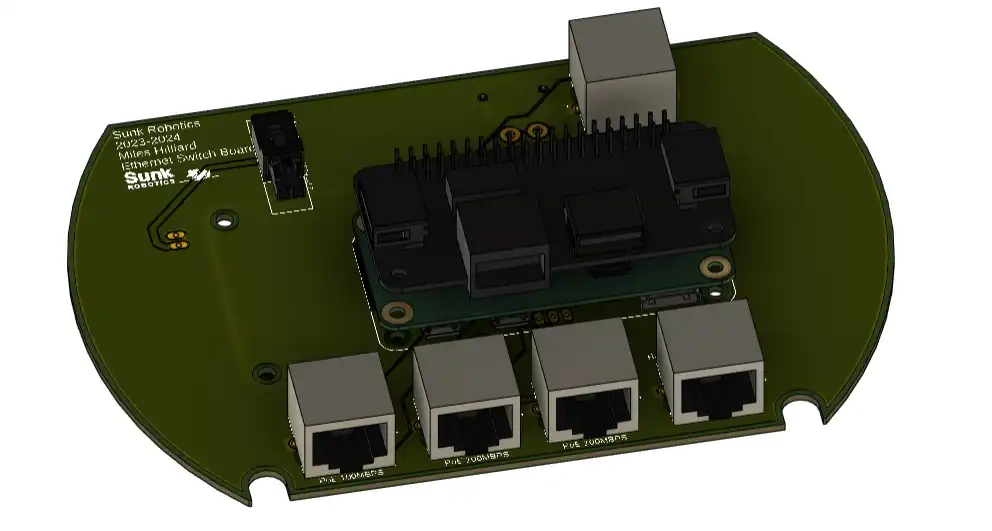I spent this week continuing to increase reliability in JONA ROV’s 5V power system, with more success than last week. JONA ROV can reliably function without random shutdowns, but powering it on is now a bit of an ordeal and the bottom camera no longer works. Fortunately, the cause for both of these problems is known. Both are caused by the 2.5F supercapacitor I added to solve the random shutdowns.

Miles Hilliard came up with the solution I’m going to implement. He suggested that the capacitor be, by default, disconnected from the 5V power system through an NPN or MOSFET, and only be connect to the system by the RPi5 after its finished booting. Miles and Shane designed the circuit to control the capacitor, and I made the necessary modifications to the Logic Board. I hope to order this new Logic Board soon.


Matty had suggested that the latency and frame-rate problems we’ve been having with the cameras are, at least in part, caused by a lack of available bandwidth connecting the surface laptop to the ethernet switch. We always knew about the 100Mbps limit, but didn’t think that it would pose too much of a problem. It appears we have been proven wrong. Luckily, Bot Blox, the manufacturer of the 100Mbps switch we were using also selling a slightly larger Gigabit switch. This new switch should alleviate all of the bandwidth issues, but a new PCB is required in order to accommodate it’s larger footprint and gigabit connection.
The Tube Cameras can’t get gigabit connections, as two of the twisted pairs in the CAT 5E cable are needed for power, but each individual camera shouldn’t need more than 100Mbps. It’s only the tether and the RPi5 that need a gigabit connection, as all the camera feeds need to be transmitted through their connections.
I also added mounting holes for an RPi Zero, should we decide to add one to the Ethernet Switch Board. We’ve been facing issues with the front camera, although I don’t know the details, I know that it has something to do with the RPi5 acting as both a camera and a router. If the increased bandwidth doesn’t fix the issues with the front camera, we’re going to try using a separate Pi Zero as the on-board router.
